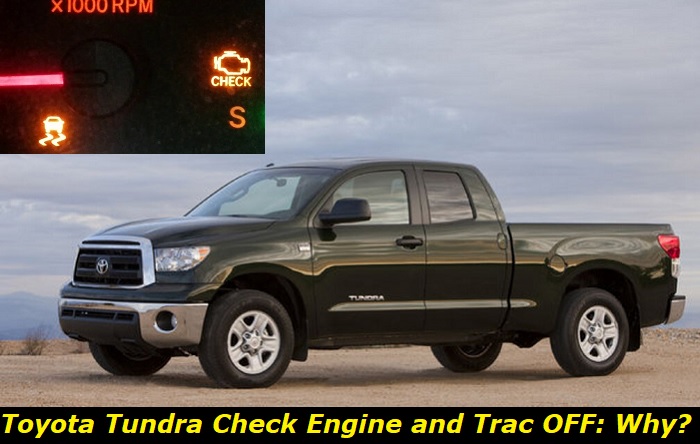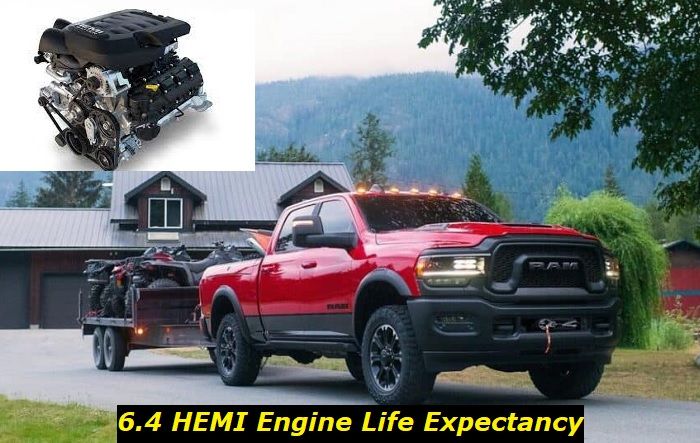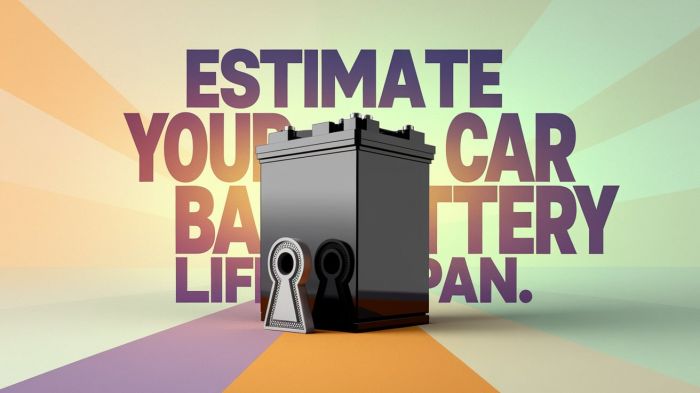Toyota Tundra is a full-size pickup that has been in the market since 1999. The pickup has stayed at the top of the SUV segment because Toyota has significantly invested in new technology and tweaking the design every other year. Whether you go for the 4.0L V6 or the 5.7L V8 Tundra, you can rest easy knowing safety, comfort, and style are what you will get.
Trac off message highlights
- Common reasons:issues in stability control function
- How to fix:disconnect the battery for some time, read the codes
- Possible consequences:vehicle's behavior may change
- Priority level:High
- Can you drive?Carefully
- DIY repair:Impossible
- Repair price range:$200-$850

What does traction control mean?
Traction control is a safety feature that was invented in the 1970s. It was initially employed on high-end vehicles such as the 7 series BMW and S-Class Mercedes Benz. In 2011, traction control became a basic feature in all new vehicles.
By definition, traction control is an electronic system that employs sensors to help prevent wheel spin. When the sensors detect a wheel spinning and no longer gripping the ground, the system slows down the engine to allow the spinning wheel to slow down. This helps prevent oversteer or understeer.
Traction control sensors are the same as the ABS - anti-lock braking system. While in some cars, you might feel a slight hesitation in power delivery, in Toyota Tundra, it is super smooth, and you're unlikely to notice unless you are pulling off from a stop on a graveled road. In addition to traction control, Tundra has electronic stability control (ESC) feature that applies brakes to a spinning wheel. This makes the truck very safe to drive on slippery roads.
What does traction control off and check engine icons together mean?
When you turn or push the ignition to start the engine, the cluster is lit with different icons. You will see a check engine light, battery, handbrake, and so on. Among the icons that will show up momentarily before going off is the traction control button.
Your Toyota Tundra traction control system can malfunction, thus giving you a TRAC OFF light. While TRAC OFF light may mean you accidentally or knowingly pushed the traction button, it might mean something more complicated when accompanied by the check engine light. There are several reasons why this can happen.
When the TRAC OFF and the CEL icons light up, it means that you are on your own as far as wheel slipping, oversteering, and understeering go. This can be quite dangerous on normal roads. However, on very muddy roads or where there is a lot of snow, the traction control system can be of no use. However, the everyday driver rarely needs to shut off the traction system.
What can cause the traction control and the check engine icons to both appear?
When the traction control and the check engine icons appear, you should use an OBD scanner for a proper diagnostic test. Here are the leading reasons why these two lights turn on;
1) A faulty traction switch
The traction switch on Toyota Tundra is located right behind the wheel. The button has a car and two wavy lines drawn on it. When the switch is faulty, it can lead to the TRAC OFF icon appearing on the dash. The check engine light on the other hand is not something to be overly worried about.
However, you should have the car checked to ensure that the problem is solved early and prevent serious engine damage. Though rare, the check engine light and the TRAC OFF icon can light up simultaneously, yet their respective causes are unrelated.
Solution
The OBD II may tell you the cause for the CEL is a faulty spark plug or oxygen sensor while showing you that a faulty switch caused the TRAC OFF light. You should solve each of these issues separately as they are not related. Use a multimeter to check whether the switch is working properly and replace it if faulty.
2) Faulty brake light switch
The brake light switch is responsible for turning the traction control system when the brakes are applied. If not working properly, a faulty brake light switch can cause the TRAC OFF to stay on. The switch is located under the hood.
Solution
To solve a faulty brake light switch problem, you will need to have a multimeter that will help you confirm whether the switch is faulty. The solution to this problem is to replace the switch.
3) Faulty shift lock solenoid
The shift lock solenoid is located near the shifter. It is responsible for locking the shifter into position when the truck is off and parked. When it's destroyed, the traction control system cannot engage when the vehicle is moving.
Solution
You will need the services of a professional mechanic to help you solve a shift lock solenoid problem. Even though you may be able to insert a key and press the spring where the shift lock button is located and be able to drive, it is advisable to seek professional help.
4) Low oil level
Low engine oil levels can cause many problems for the engine and other vehicle systems. A low oil level causes the engine to overheat, thereby causing the traction control system to shut down. To ensure the traction control system stays intact, always ensure the engine oil is at the recommended level and regularly service the car as required.
5) Low tire pressure
Deflated tires have more traction because they cover more surface area. However, the more traction the tires have, the harder it is to steer the truck. Operating such a vehicle on a snowy or very muddy road is not safe. Always ensure that the tire pressure of all the wheels is at the recommended PSI.
How do you prevent the traction control and the check engine light from appearing?
The traction control system on your Toyota Tundra is an art of work when it comes to keeping you and your passengers safe. However, like every other app or system, it is not always perfect. It can malfunction either naturally or from being neglected. Here are some tricks you can employ to ensure the TRAC OFF and the CEL don't appear:
- Regular maintenance - This requires that you do a regular oil change, as advised by Toyota. You should also ensure the tires have the appropriate pressure and are of the right size. Loose parts could also cause the said lights to come on.
- Updating the vehicle's software - Toyota employs software to run many of the Tundra's systems. To ensure the truck remains safe and operational, the company releases software updates to remove bugs, improve the software and even correct some errors in the previous version. Not updating your Tundra's software exposes the vehicle to traction and engine issues.
- Avoiding extreme conditions - Well, this is not really sane advice to give a seasoned Tundra driver in Montana. Still, one of the reasons why the traction control system can malfunction is repeatedly driving on extremely icy or muddy routes.
How does the Toyota Tundra traction control work?
The traction control button is located right behind the steering wheel. A car on a wavy line is drawn on the button, and the word 'OFF' is written below the line. Traction control automatically turns on when you start the truck and will continue engaging unless you switch it off using the said button.
When you want to turn the traction control off, you should press the button for three seconds, and the 'traction control off' light will appear on the instrument cluster. The Auto LSD (limited slip differential) icon will also appear on the instrument cluster. This means that despite the truck now operating without traction control, the LSD feature is activated which is ideal when you are driving on moderately muddy or icy roads.
The Auto LSD doesn't cut engine power like the traction control. It only applies brakes on the slipping wheel, unlike the traction control, which applies the brakes and reduces the engine output power.
To fully turn off the traction control, you will need to press the traction button for a few seconds, and the traction OFF icon will appear, and the Auto LSD icon will disappear. This then means that you are on your own, and modern technology will not be at your aid when the wheels start slipping.
Conclusion
Toyota Tundra is a top-selling truck in North America. It is equipped with all manner of systems and apps to help the driver get the very best out of this ultra-modern truck. If you normally drive your truck in the city and rarely go off-road, you might survive driving around even when the TRAC OFF and the CEL lights are on.
Remember, however, that it's a federal requirement to have the traction control system in your vehicle operating as the law states.
About the authors
The CarAraC research team is composed of seasoned auto mechanics and automotive industry professionals, including individuals with advanced degrees and certifications in their field. Our team members boast prestigious credentials, reflecting their extensive knowledge and skills. These qualifications include: IMI: Institute of the Motor Industry, ASE-Certified Master Automobile Technicians; Coventry University, Graduate of MA in Automotive Journalism; Politecnico di Torino, Italy, MS Automotive Engineering; Ss. Cyril and Methodius University in Skopje, Mechanical University in Skopje; TOC Automotive College; DHA Suffa University, Department of Mechanical Engineering






Add comment